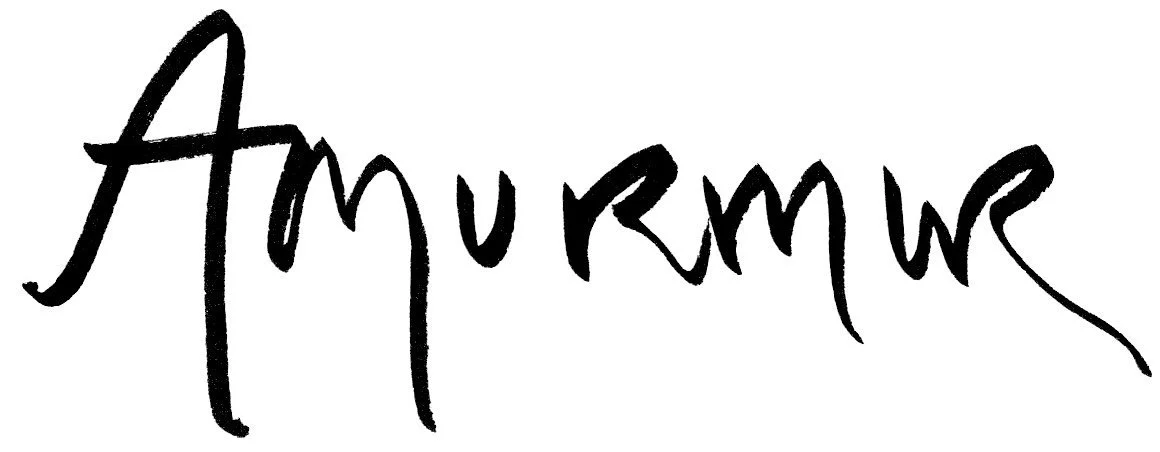Over My Dead Bodice
The birth of Amurmur
“It’s a cemetery for stories” the woman replies. “Con su permiso, how does one bury a story? If a story is never told, where does it go?”
In The Cemetery of Untold Stories by Julia Alvarez, a graveyard becomes the final resting place for all the stories retired author Alma had collected but not recounted. She creates a burial space for all her drafts and precious notes. The story unfolds when the groundskeeper and caretaker, Filomena, hears the stories speaking through their manuscript tombs, begging to be chronicled. My reading ears pictured wailing stories and this idea has been gradually burning through me.
The following describes a strong case of archive fever.
She had always felt a pull towards the untold and the uncelebrated, always the only guest at the silent festivities she threw for the ‘un-’ words. She became confused about the notion of status in archives, panicked about things disappearing and would methodically write facts and histories down, filling countless amounts of disjointed notebooks. She was unknowingly disorganising the arrangement of things that had shaken her. In her day to day she wanted to protect everything that had never been deemed worthy of archival gloves - things history was deciding didn’t deserve official catalogs, stories that weren’t given the chance to belong to collective knowledge. She became the industry’s worst archivist as she chronicled these things in her own way, at her own pace, with the only toolbox she knew of: she celebrated them. If she could, she wore them. Where she could, she spoke to them. When she could, she contacted remaining family members or trusted keepers. However she could, she brought them to life. She willed them into existence and squeezed her life into what remained of theirs. She became a dealer of echoes, bargaining and haggling with the complications of space. The cries she wanted to informally resurrect found themselves with no crypt to hide in. Journals, though a raging party, became a cemetery of untold histories. Now she’s haunted by the idea they are wailing.
The object’s wishes and the story’s destiny are not entirely for the archivist to establish. Both skeletons of memory have a final choice to decide where they go, and most importantly, who tells of them. How many times had she tried to write about pasts she wasn’t meant to touch, grappling with unbreakable walls? She would find it hard to passionately discuss things she wasn’t meant to speak of, no matter what feelings they had stirred in her. When the object wanted her to rescue it from oblivion, she knew it was right. It became a visceral thing, an umbilical ribbon. This will have happened to so many of you: found objects and signatures, labels and stories instigating months if not years of rabbit holes, with mysteries evolving serendipitously and gut feeling guiding the way. She started writing about and relaying the work of women discovering the discarded work of forgotten ones, each of them demonstrating through tales of coincidence and relentless research that they were, in fact, the correct mediums through which the story could pass one last time.
There are undeniable similarities in the archiving and health vernaculars. Separately and together their languages are an advocate for care, comfort, love and community against the hard damage of neglect. She had become an archivist the same year she had gotten an important health diagnosis so she was learning about both worlds at the same time, initially unaware they were using the same dictionary. Gradually she understood she was protecting the nimble skeletons of the past. (“Bodices are boned,” she once said in an interview.) Stories so strong and inspiring, untouched and unarchived, showed the most fragile things were in fact the most powerful. She was finding stories that resembled her own, manuals on ways of existing that she could relate to and events that made her hopeful. Archival work whatever its unraveling shape became a beating semaphore. She soon understood how many of these stories had catapulted themselves into lives and lodged themselves under the tutelage of people around her and sometimes in her own (ungloved) hands. She speaks often of the fact that when in the care of memory’s chosen archivist, what floats finds its space and can’t leave this world twice. (Filomena is the cemetery’s care-taker after all.)
‘Unquieten’ isn’t in the dictionary, that I know. It opens new space for wandering echoes. Amurmur is for remembering and for emblazoning silence. It won’t only be about showcasing an archive or a moment unseen, it will encourage discussion with those working alongside memory (- their own or someone else’s bones -) as building blocks for their own personal language. "Those who restrict narrative to linear chronology (the one-damned-thing-after another version of history) have both misread history and underestimated the variegated potentials of story-telling. " (Renato Rosaldo.)
Creating this platform comes at a strange time: I have somehow “archived” a recent death into the moon, simply because the back of his head, which I would see most days, looked exactly like the lady in the sky. My new myth gives reality a softer outcome: my fluctuating, complicated, angered moods adopted a tangible reality and can finally sleep.
This is an invitation to share what’s wailing, whether now or belonging to a time before, resting or inspiring you still. There are no good futures without good cries: you can’t bury stories alive. Amurmur is for the stories dissolved or the ones we tell to understand our own trajectory. A bridge swinging between past and present, present and future, future and past.
The best things are left unsaid? untouched? filed away? in a folder? in a vault? Over my dead bodice!
words: Alexia Marmara